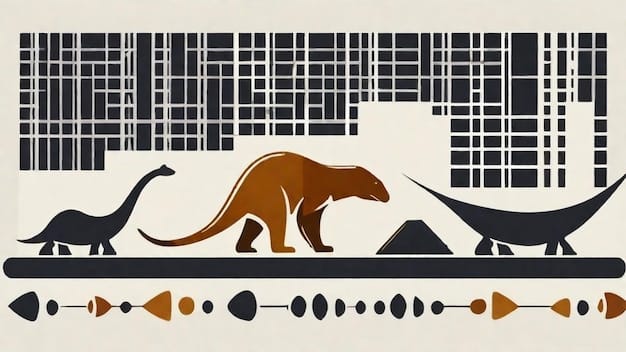The recent unearthing of a significant marine fossil from a mine in Morocco has captured the attention of the scientific community, raising both intrigue and caution. This fossil, which is thought to belong to a previously unidentified species of ancient sea monster, has prompted discussions about the implications of its discovery and the methods used in its extraction.
The fossil was discovered in a region known for its rich geological history, where sedimentary layers have preserved a variety of prehistoric life forms. The mining operation, primarily focused on extracting minerals, inadvertently exposed this remarkable specimen. Initial assessments suggest that the fossil could date back millions of years, potentially offering insights into the evolution of marine life during a time when the Earth’s oceans were vastly different from today.
However, the excitement surrounding the discovery is tempered by concerns regarding the conditions under which the fossil was found. Experts have raised red flags about the potential damage that mining activities can inflict on such delicate specimens. Fossils are often embedded in rock formations that require careful excavation techniques to avoid destruction. The methods employed in mining operations typically prioritize efficiency and profit, which can lead to the loss of valuable paleontological information.
Paleontologists emphasize the importance of context when studying fossils. The geological setting in which a fossil is found can provide critical information about the environment in which the organism lived, its diet, and its interactions with other species. The extraction of the fossil from a mining site may have stripped it of this vital context, making it more challenging to understand its significance fully.
In light of these concerns, scientists are advocating for a more integrated approach to fossil discovery and preservation. They argue that mining companies should collaborate with paleontologists to ensure that any significant finds are documented and studied before extraction. This collaboration could lead to a more sustainable model of resource extraction that respects both economic interests and scientific inquiry.
The Moroccan fossil has also sparked discussions about the ethical implications of fossil collection. The practice of removing fossils from their natural settings raises questions about ownership and the responsibilities of those who discover them. In many cases, fossils are considered national treasures, and their removal can lead to disputes over cultural heritage and scientific stewardship.
As the scientific community continues to analyze the fossil, researchers are employing advanced imaging techniques and molecular analysis to glean as much information as possible from the specimen. These methods allow scientists to study the fossil without causing further damage, providing a glimpse into the life of an ancient creature that roamed the oceans long before humans existed.
The discovery has also reignited interest in Morocco as a significant site for paleontological research. The country is home to a wealth of fossils, including those from the Devonian and Jurassic periods, which have contributed to our understanding of the history of life on Earth. As more fossils are uncovered, the potential for new discoveries increases, but so does the need for responsible excavation practices.
In conclusion, while the discovery of the ancient marine fossil in Morocco is a remarkable find that could enhance our understanding of prehistoric life, it also serves as a reminder of the delicate balance between scientific exploration and the preservation of natural history. The concerns raised by experts highlight the need for a collaborative approach to fossil discovery, ensuring that significant finds are treated with the care and respect they deserve. As research continues, the hope is that this ancient sea monster will provide valuable insights into the past while also prompting a reevaluation of how we approach fossil extraction in the future.


